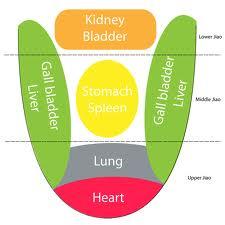If you are feeling under the
weather, just stick out your tongue - the state it's in can present an accurate
picture of your health. Inside of your mouth you have a reliable diagnostic
tool for monitoring your overall state of health on a day to day basis.
The colour, texture and moisture
of your tongue can provide tell-tale signs of what's going on inside your body.
If you've ever gone to an acupuncturist or herbalist, you've probably been
asked to stick out your tongue. This can seem like a very strange request, and
you’re usually left to wonder what they can see there.
Your tongue is richly supplied
with blood vessels and thanks to a constant flow of saliva, it is constantly
being cleaned which discourages harmful bacteria forming in the mouth area. However,
if a person is unwell, a problem can often be detected by simply looking at the
tongue.
A body with healthy organs and a
clear digestive tract will show up pretty pink. A body with clogged organs or
undigested food from the night before will show up with a layer of fuzz, film,
the quivers, indentations from teeth, and/ or bumps (other than your taste
buds).
Although the complexities of
tongue analysis can take years, or even a lifetime to master, there are a few
simple things you can learn right away to diagnose yourself and quickly remove
any toxins that have accumulated.
What to Look For?
Tongue Colour
Tongue colour can range from pale
pink to red or even have a bluish tinge. The tongue colour reflects the
distribution of body fluids throughout the body. For example:
- A pale tongue tells us that there may not be enough blood in the body. Often the root cause of a pale tongue can be found in diet. This is because food gives us the energy to make blood.
- A tongue that is purple or has a bluish hint could be a warning that fluids and blood are not fully circulating. Lack of circulation can also render into emotional stagnation or depression.
Tongue Coat
The tongue coat, which often
shows up on the middle or at the back of the tongue, lets you know how well you
are metabolizing the food that you eat.
- A light, thin white tongue coat reflects healthy digestive function.
- A thick tongue coat reflects an excess of dampness, or pathogenic fluid. The tongue coat may be thick and yellow or thick and white. Most commonly, a thick tongue coat is associated with poor gut function.
- No tongue coat at all could mean some form of fatigue in the body. For example, a red and shiny wet tongue could mean that the body doesn't have enough fluids to produce a coat.
Tongue Tip
When it comes to emotions, the
tip of the tongue is particularly important.
- A red tongue tip shows up when the tongue tip is redder than the rest of the tongue body. This can reflect some kind of psychological stress. Too much thinking or worrying can reduce the cooling, regenerative fluids of the body and generate heat. Heat shows up as a red colour in the tongue. When we see a red tongue or a red tip, it makes sense to avoid foods that can overheat the body. These are foods like wine, alcohol, coffee, spicy foods, and too much meat.
- No tip or indentation at the tip of the tongue. When someone experiences severe trauma, this may show up as an indentation on the tip of the tongue. Emotionally, this person may be slightly withdrawn or feel an overall loss of strength.
At Your Next dental examination stick your
tongue out at your Dentist in Preston . Honestly, we invite you to be as
impolite as possible. During your oral cancer screening portion of your dental check-up
we need and want to see as much of your tongue, tissues, lips, and throat as we
can.

Comments
Post a Comment